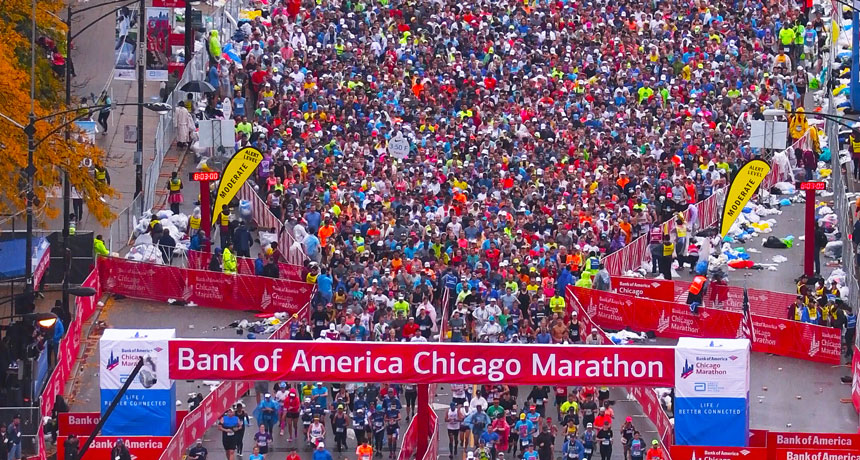The physics of fluids explains how crowds of marathon runners move
A new liquid-inspired theory can predict the jostling of throngs of marathoners lining up to race

SMOOTH MOVE Packs of runners in the Chicago Marathon behave like a liquid in the lead-up to the race, a new study finds.
N. Bain, D. Bartolo